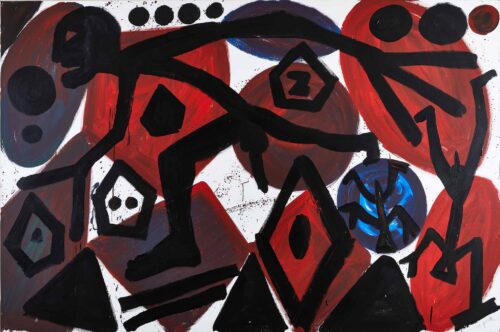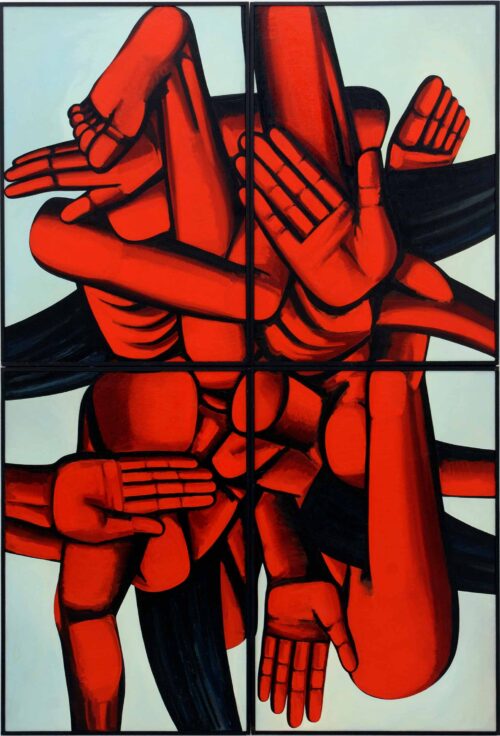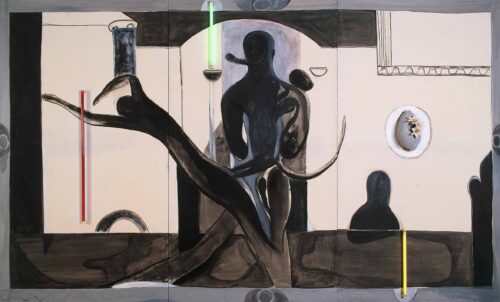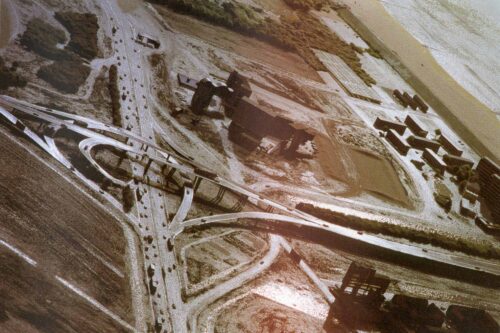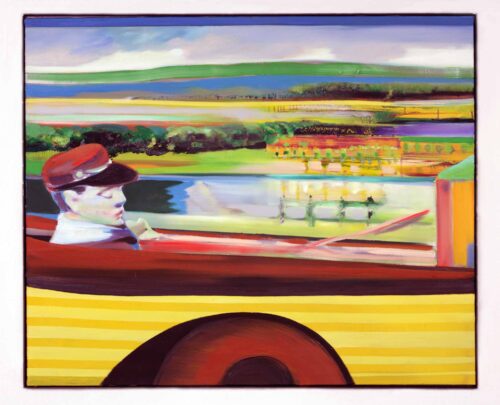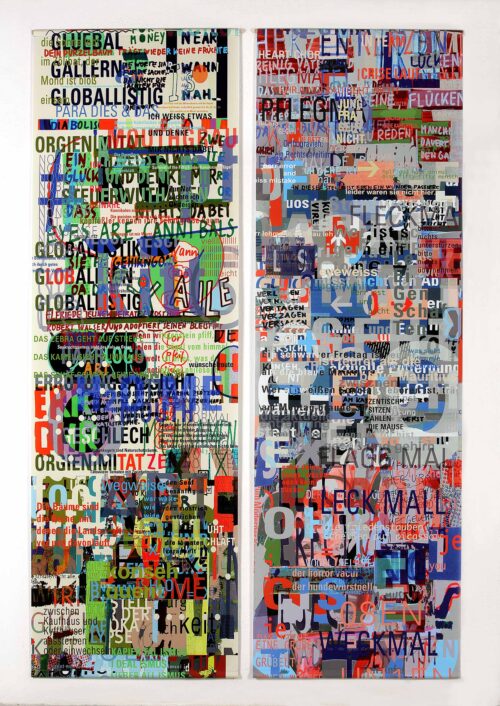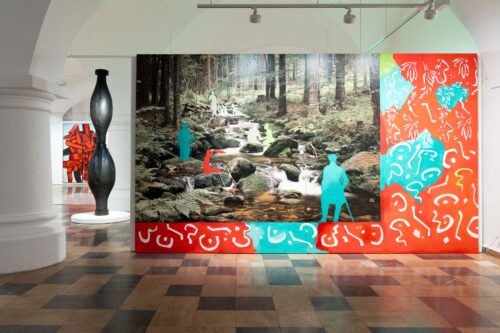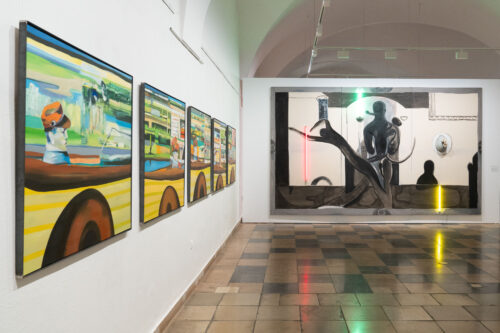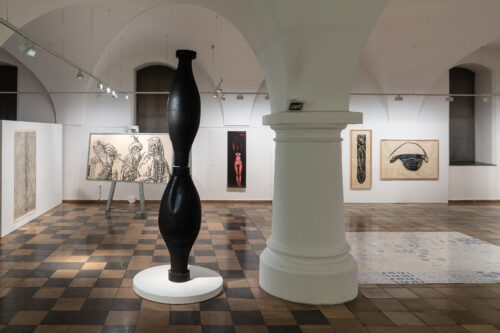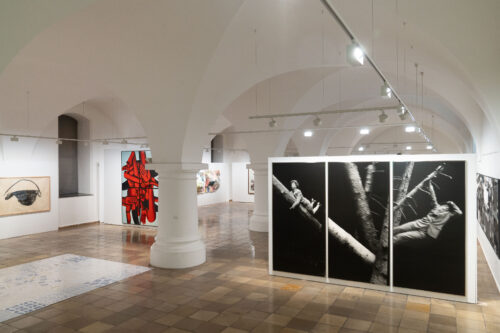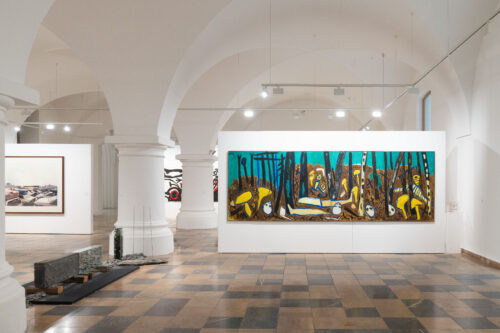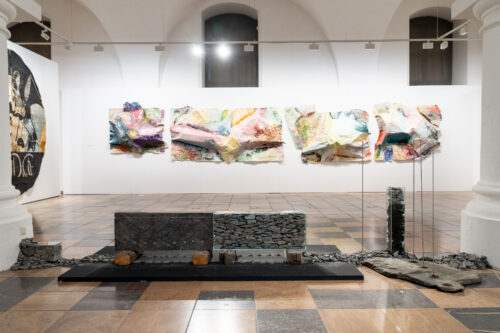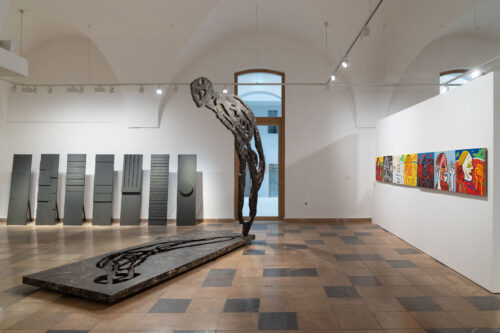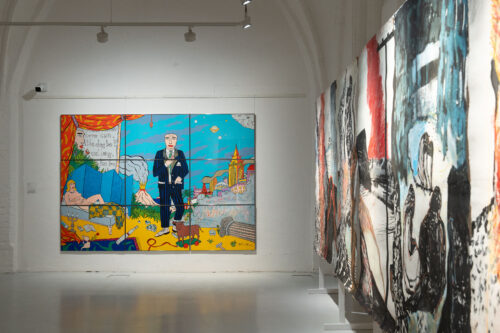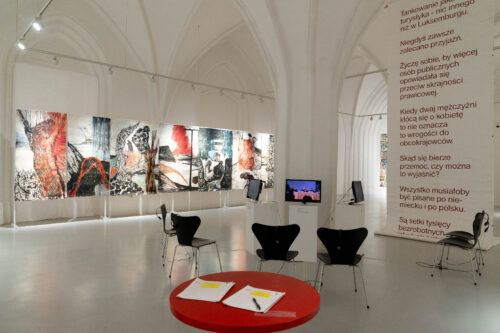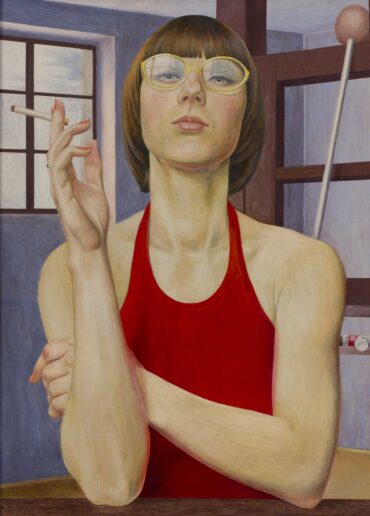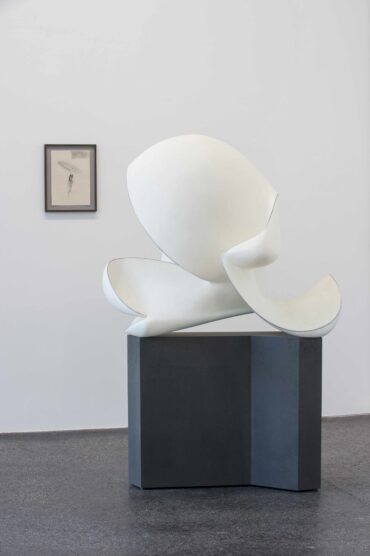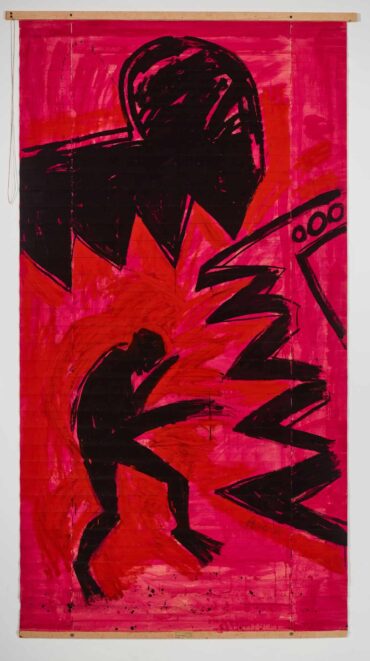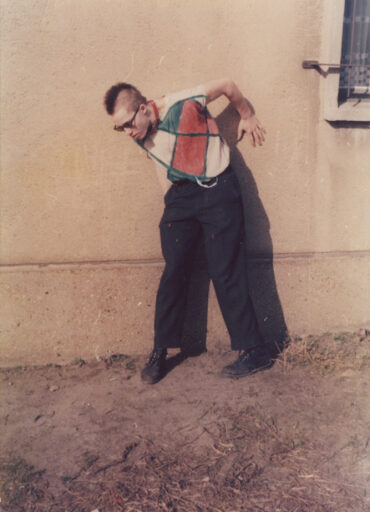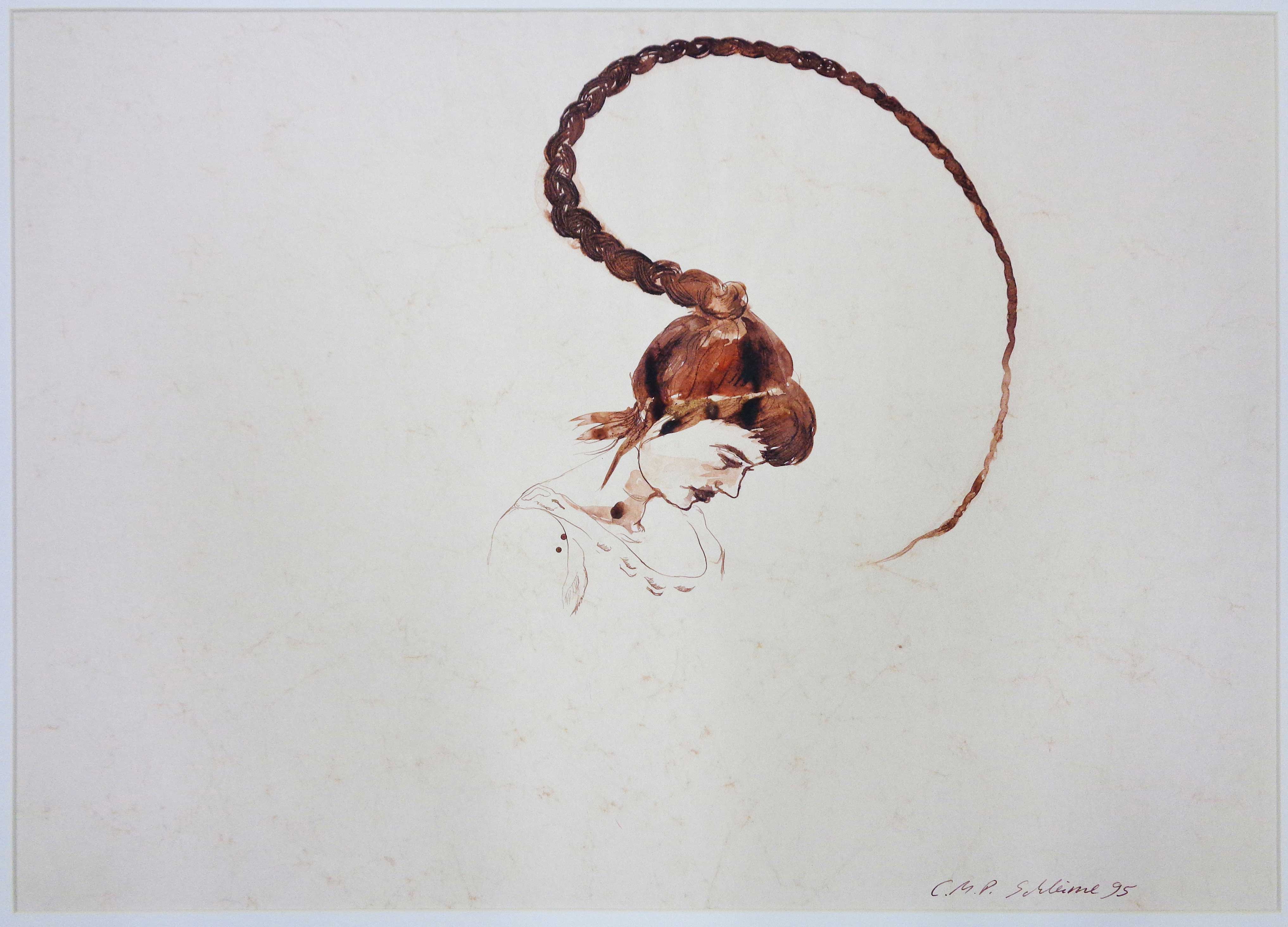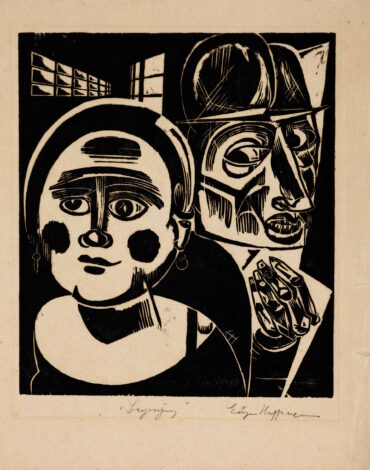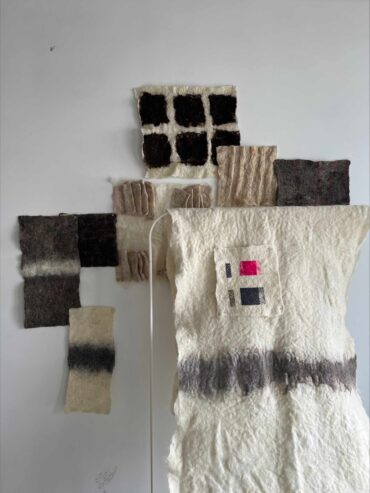
GroßARTig Bilder und Skulpturen aus der Sammlung im Großformat
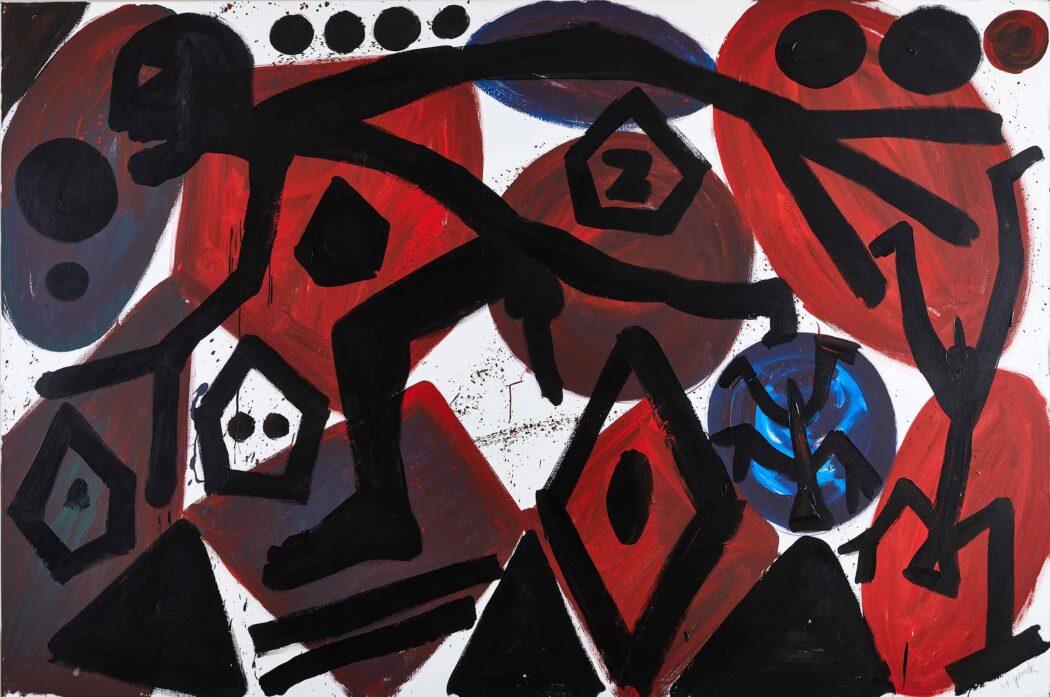
A. R. Penck, Schritt ins Ungewisse, 1994, Öl auf Leinwand © VG Bild-Kunst, Bonn 2024, Foto: Tobias Tanzyna
Anna und Bernhard Blume, Eckhard Böttger, Andrzej Bobrowski, Birgit Brenner, Matthias Geitel, Michael Geyersbach, Moritz Götze, Harald Reiner Gratz, Hans-Hendrik Grimmling, Hetum Gruber, Andreas Gursky, Izabella Gustowska, Claus Hänsel, Peter Herrmann, Klaus Killisch, Via Lewandowsky, Michael Morgner, Carsten Nicolai, Enrico Niemann, A. R. Penck, Neo Rauch, Maren Roloff, Hans Scheuerecker, Judith Siegmund, Wolfgang Smy, Christian Späte, Erika Stürmer-Alex, Frank Zeidler, Edwin Zwakman
Wann hat man schon einmal den Platz eine sieben Meter lange Malerei wirken zu lassen oder eine sechs Meter hohe Installation aufzubauen? Dabei üben Großformate eine besondere Anziehungskraft auf Künstlerinnen und Künstler aus. Der Größen-Rausch erfordert freilich Mut, doch die Lust auf Bildgiganten überwiegt zuweilen.
Nun stehen solche Malereien, Handzeichnungen, Druckgrafiken, Fotografien und Skulpturen bzw. Objekte im Mittelpunkt einer eigenen Sammlungsreflexion. Dabei wurden Großformate in den einzelnen Techniken ganz unterschiedlich definiert. Was in der Druckgrafik, deren drucktechnische Herausforderungen Größenlimitierungen mit sich bringt, riesig erscheint, gilt in der Malerei noch lange nicht als groß. Auch mehrteilige Werke, die den Charakter des Seriellen haben, wurden einbezogen.
Die ausgewählten Bildriesen variieren von figurativ bis abstrakt, vom Expressiven, über die Pop Art bis zur Konkreten Kunst. Die „Großtaten“ stammen aus den 1980er Jahren, entstanden vor allem in den 90ern bis 2013. Es geht um konkrete soziale Phänomene des Frankfurter Stadtraums, aber auch um Leidenschaft, Hoffnung, Schuld, Protest und Angst. Reisen und Überflüge werden ebenso gezeigt, wie modernisierte Märchenwelten oder Strukturschwankungen. Es sind faszinierende Ausschnitte der Welt im Großformat, die die Magie des Großen feiern.
…
The exhibition brings together works from the BLMK collection that are rarely shown due to their size, as they require a particularly large amount of wall space or space.
Large formats have a particular attraction for artists. Of course, the rush for size requires courage, but the desire for giant images sometimes prevails.
Now such paintings, hand drawings, prints, photographs and sculptures or objects are the focus of this exhibition from the BLMK collection. However, large formats were defined very differently in the individual techniques. What appears huge in printmaking, where printing technology challenges involve size limitations, is far from being considered large in painting. Multi-part works that have a serial character were also included.
The selected giant images vary from figurative to abstract, from expressive to pop art to concrete art. The “great deeds” date from the 1980s, and were mainly created between the 90s and 2013. They are about concrete social phenomena in the Frankfurt urban area, but also about passion, hope, guilt, protest and fear. Travel and overflights are shown, as are modernized fairy-tale worlds and structural fluctuations. They are fascinating sections of the world in large format that celebrate the magic of the big.
